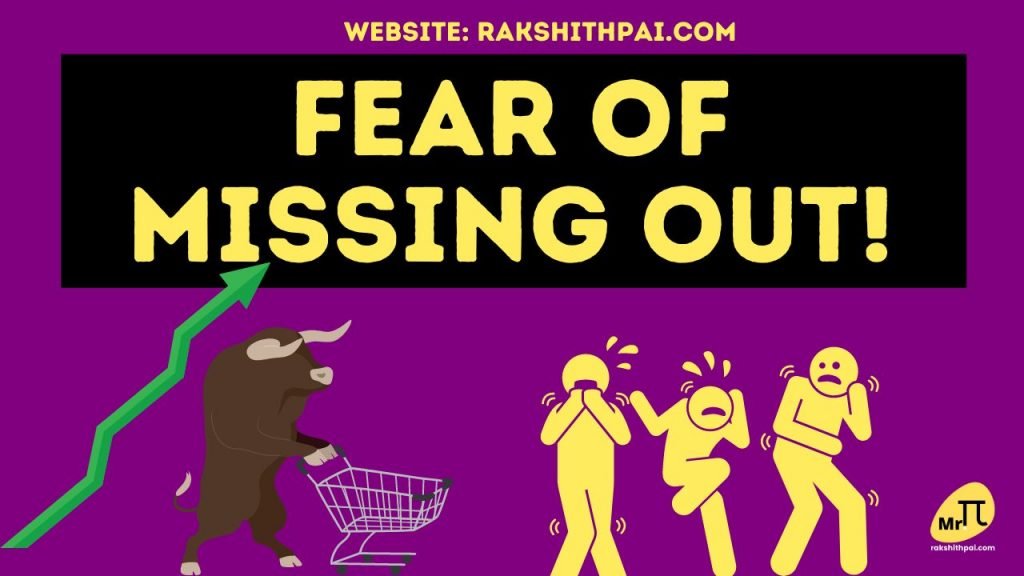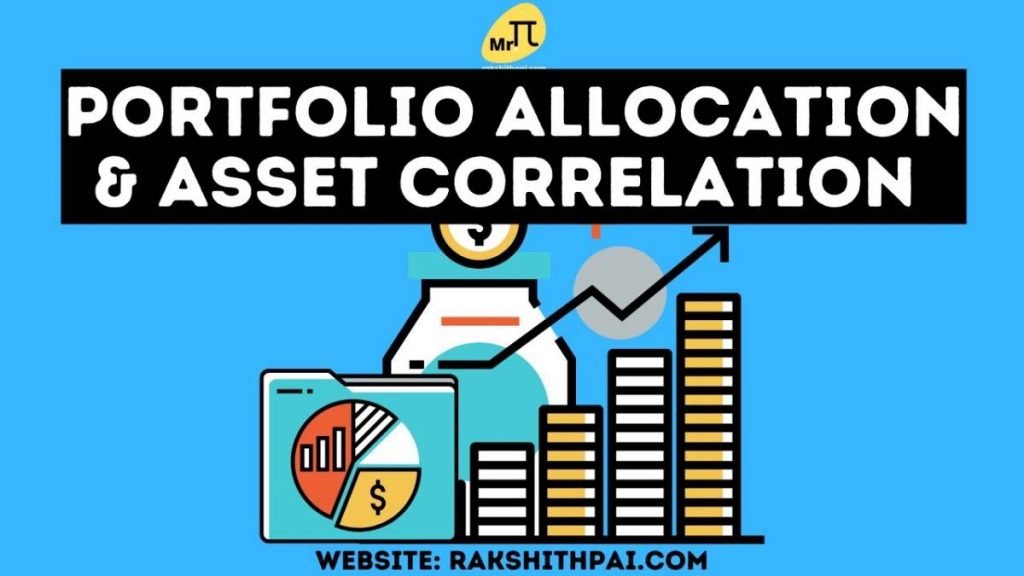Table of Contents
Current Market Conditions:
The Indian market reached an all-time high on December 1 and has been correcting it ever since. But will it continue to fall from here? And if it does, what must we do?
Most of us have this question. In fact, three people personally contacted me and asked what they should do next.
People want to know if it is recommended that we sell all of our holdings and re-enter at a lower level.
Why Indian market reached an all-time high?
After a broad market rally until September 2022, the market corrected for around 7–7.5% and then came back to form a new high, almost reaching 19000 points on the Nifty.
Mainly because of the FII and the strong support of our own DII and retail investors. The market reached a new high.
Will the New High sustain?
From its all-time high, the market has already dropped close to 3%. It seems like we are already in a market correction zone.
The main reason for this is that the Fed has never stopped raising interest rates. And now COVID concerns are on the rise.
When the Fed raises interest rates, the Indian Reserve Bank is forced to follow suit. And when that happens, the liquidity will get squeezed, and thus all the risky asset classes will get fewer investments.
One such asset is equity.
Add recession to this mix, and we are looking at quite a big correction in the market.
How to Remain Resilient in Volatile Times?
What Should Investors Do?
Remember, the question was whether to sell all our holdings.
The answer is a straight no! Do not ever get out of the market completely. I mean, if you wish to be on cash due to the expected market crash or correction, then please see to it that your cash holding isn’t more than 30%. As a result, at all times, one must have at least 70% of their total portfolio invested in the market.
Now your question might be:
Where to Invest During the Recessionary Period

I stress the importance of the three pillars of the Indian economy. The three major sectors in which we must be invested at all times.
The Three Sector are as follows;
BFSI
BFSI stands for “Banking Finance Services and Insurance.”
With one of the world’s largest and most reliable financial networks at its disposal, India’s banking industry has a distinct competitive edge.
Recent monetary and regulatory changes, including increased lending rate freedom, the progressive diluting of government stakes in public-sector banks, and loosening limitations on private-sector and foreign banks, have bolstered its stability.
Long-term investments in India’s booming insurance, banking, and housing industries appear promising as the country’s economy prepares to accelerate. Indian financial institutions that want to be globally competitive might take advantage of their country’s expanding local market.
FMCG
FMCG stands for “Fast-moving consumer goods.”
Increasing disposable income, a larger young population, and more brand recognition have all contributed to the fast-moving consumer goods (FMCG) sector’s rapid growth in recent years, making it India’s fourth-largest industry. The business of fast-moving consumer goods (FMCG) in India is a big part of the country’s GDP. Sales of home and personal care products make up half of the sector’s total sales.
Considering that India’s middle class is bigger than the whole population of the United States, no FMCG company can afford to ignore the nation.
As more Indians join the middle class and enjoy the fruits of economic development, the fast-moving consumer goods (FMCG) sector in the country is expected to continue growing. But perhaps most importantly, India’s young (median) population is growing more consumerist as a result of its rising aspirations.
IT
IT stands for “Information Technology.”
The information technology and business process management industry in India has emerged as a key driver of economic expansion, making substantial contributions to GDP and the public good. In FY22, IT contributed 7.4% to India’s GDP; by 2025, experts predict it will contribute 10%.
India is now ready for the next stage of growth in its IT revolution as cutting-edge digital applications spread throughout the country’s many economic sectors. India is often thought to have the most Internet users and the cheapest Internet rates in the world because 76 crore people are online at the same time.
Now, with the groundwork laid by the Digital India Program’s improved digital infrastructure and expanded access, the focus is on the creation of substantial economic value and the empowerment of citizens. When compared to other countries, India has one of the quickest rates of digital adoption. This was achieved via a confluence of regulatory reform, private sector creativity and funding, and the introduction of novel digital applications that are already enhancing and penetrating many areas of life and industries.
Watch this video to learn more about the three sectors. CLICK HERE!
But why these three sectors, and what is their importance during the recessionary period?
7 Best Sectors for Wealth Creation by 2030:
Why Three Pillars Are Important?
For this, you must understand the economics behind it.
First, there’s BFSI (banking, financial services, and insurance). Essentially, an institution that deals with money.
No matter what, an industry with its intrinsic business being in money management will do the same or a bit better than the country’s economic growth.
What I mean here is, if you think India will grow by double digits for the next three years, that growth is not at all possible without a strong and robust financial infrastructure. Banking, and financial services will grow as long as the nation does. Hence, it is evident from the fact that the entire index, both Nifty and Sensex, has given 35 to 40 percent of its weight to this sector.
And if recession hits the nation, this sector is first in line to take a hit. With a recession, money circulation becomes that much more difficult. As the economy slows down, financial service providers will have less room to make money.
So, in order to protect our portfolio from short- to long-term underperformance as a result of the value decline of financial companies, we must invest in FMCG and IT.
Why FMCG & IT important during recession?
FMCG signifies the consumption of basics and utilities. FMCG is nothing but fast-moving consumer goods. We, the population of 140 crores, will consume these goods no matter the economic conditions.
Check your own household consumption pattern; you might have reduced spending on luxury items or maybe completely stopped altogether. However, for items such as packaged foods, beverages, toiletries, cosmetics, and so on, consumption may slow slightly, but it will never stop completely!
So, the demand for FMCG products may slow down at times but will always be present.
That’s one big reason to invest in FMCG companies and stay invested at all times. Infact, this year, the year that was known to bring recession and market correction. In 2022, the FMCG sector as a whole has given 22% ROI, the highest in the market.
How about Information Technology?
Information technology accounts for about 8% of the country’s GDP and is expected to grow its contribution over the years. estimated to contribute around 10% of our nation’s GDP by 2025. The Indian IT sector is growing at a double-digit rate, close to 15% per annum. It is, without a doubt, one of the fastest-growing sectors in India.
But in 2022, the sector was the worst-performing one, giving a negative 22% ROI.
I’ve made a detailed video on why the IT sector failed Indian investors this year, and the full blame goes to the Russia-Ukraine war. Check out this video for more information. Check this link, CLICK HERE!
Anyway, both IT and FMCG should have been immune to the recession. However, both went in either direction, yielding polar opposite results. Well, surprising as it may seem, This was expected when you know that the biggest consumer of Indian IT services, i.e., both the US and the entire western country, is in a passive war with Russia.
Anyways, now that the IT sector has given negative returns and is available at around 13 to 14 PE, It is the right time to slowly add IT companies to our portfolio.
Instead of buying into the large IT companies, investors must also check for mid- and small-cap IT companies that concentrate their services around AI, EV, and Agri-Tech. If you are unable to pick the right company, please prefer large IT companies and invest in IT ETFs.
For More Information, Check this Video:
Disclaimer: All the information on this website is published in good faith and for general information purposes only.









